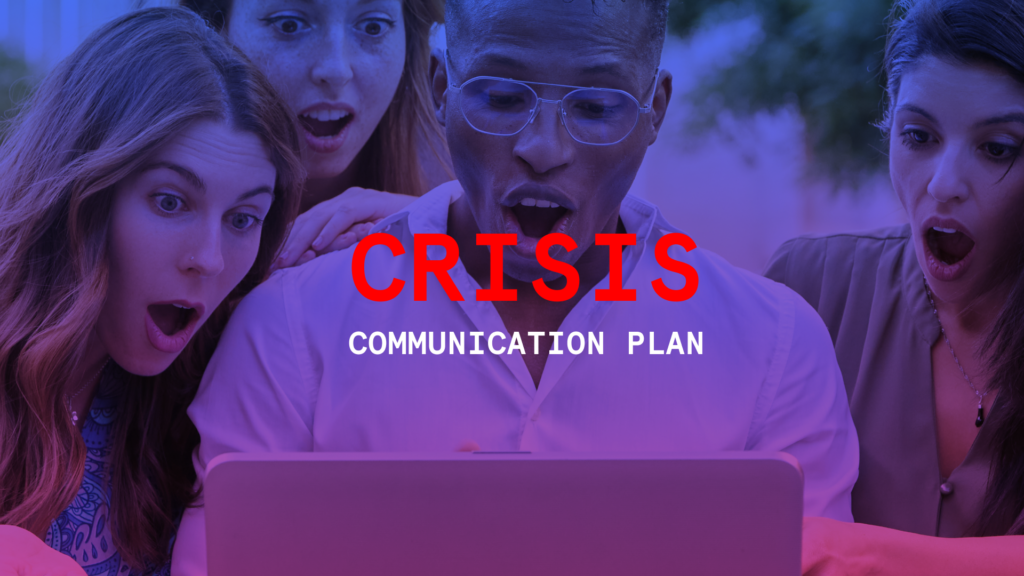by Lee Dussinger
Acting quickly in the face of a brand crisis is crucial to minimizing the damage. If you are too slow to release a statement, the time you take to refine your message will be held against you by the public. However, saying the wrong thing – or not having executive approval – can be even more disastrous. That’s why preparing a crisis communication plan ahead of time is essential.
Of course, no PR crisis management plan can ever be finalized in advance. Specifics, details, action items, and quotes will all need to be filled in to be relevant. However, what you can do is establish a framework for the messages. Specifically what comms will be needed, who will say what, and what channels will be used.
At Opal, we’re a communications management software that PR teams from the world’s biggest brands – like GM, Boeing, UHG, and many more – use to bring their stories to market. We’re sharing the best practices of how you can create a crisis management plan for your brand.
5 Elements of a PR Crisis Management Plan

Communications teams are one of the most critical pieces of any commercial organization, telling the stories that advance your brand in the market. However, when something goes wrong for the brand, that’s when PR teams truly demonstrate their value.
While every PR crisis management plan is different, these are the essential elements you need to craft ahead of time. Depending on your organization, this plan can be fairly simple or quite extensive. For these examples, we’ll be showcasing what a crisis comms plan looks like when built in Opal.
1. Possible Types of Crises
The first thing you’ll need to do when creating your crisis comms plan is identifying the types of emergencies to which you’d need to respond. While you can’t predict the future, you can recognize areas of potential problems so you can start formulating your responses. This can be inspired by your own internal analysis or drawn from previous PR emergencies you’ve handled in the past.
For our fictional coffee company Atlas’ PR crisis plan, we identified 3 different types of emergencies:
- Health/Illness Issue
- Influencer Backlash
- In-Store Violence
By establishing your potential emergencies ahead of time, you can start planning specific and tailored responses. Creating one-size-fits all crisis comms is far less effective both in terms of speed to market and effectiveness. The less specific your plans are, the more work needs to be done once the actual crisis is ongoing. In addition, by offering up vague and non-specific messages to a brand crisis, you risk having a weak and unsatisfying response to the issue at hand.
2. The Pillars Needed for the Response
Once you plan out all of the specific types of crises for which you’ll need to prepare responses, you need to establish what those responses should be. This entails identifying what types of message pillars are required, as well as what channels those need to be published on. Let’s say you know you want to have a social media response – you’ll want to plan for each of the different channels you use and modify the message accordingly.
When responding to a health issue stemming from a product or store, the Atlas PR team plans to have a social response, a traditional media outlet response package, and a message directly from the CEO. This handles all of the pillars needed to cover the full spectrum of communications around this type of issue. Each of those pillars is then divided into the specific channel. For example, the CEO executive comms message features a post on their personal LinkedIn, as well as an email.

The above Opal screenshot shows each of the different messaging pillars. Clicking into any of those would show the message outline or content blueprint.
3. The Message Blueprint
For the next section of your PR crisis management plan, you’ll want to plan out the general details of the messaging. While you can’t fill in the exact details of the emergency ahead of time, you can do quite a bit of writing in preparation. When putting a rough draft together, you can set the correct tone you want the communications to have and establish the structure of what will be said.
Planning out the majority of the message – and getting full approval – ahead of time is a very important part of any crisis communication plan. Since the majority of the words and imagery are finalized, you limit the amount of work and the approvals that need to done when time is a factor.

In the Opal screenshot above, you see a true-to-life preview of how the social comms messages will look. While the majority of the copy is filled in, there are still sections that need to be completed. (Specifically, the exact store location where the incident happened and the specific nature of the incident are still left blank.)
The value of doing this work in Opal is that you can envision exactly how your message will look through the eyes of your audience.
4. Setting Workflows & Assignments
Setting up the plan of what will be said and on what channels is a critical part of any PR crisis playbook. It’s where you’ll undoubtedly spend most of your time. However, another critical part of this plan is identifying who is going to do what and in what order.
When a brand emergency occurs, time is absolutely of the essence. Any time wasted on figuring out which team members handle which steps delays your response getting to market. That’s why establishing who is handling what elements of the crisis plan ahead of time is especially important.

In the Opal screenshot, you can see the pre-built task phase for the crisis comms that establish all three key duties that need to be completed. When a workflow in Opal is kicked off, all parties are notified at the correct step of the process so they can do their part.
5. Executive Sign-Offs Needed
The final element of many PR crisis management plans is the sign-off of one or more executives. This especially holds true if an executive is contributing a quote for press publication – or if the comms are appearing to come directly from them.
To ensure that executive sign-off doesn’t delay the release of your comms strategy, establishing and automating this sign-off process is a crucial part of preparing a strategy. Rather than trying to catch your executive via a phone call, email, or Slack message – the best plans use comms software to automatically shoulder tap the executive when their input is needed.
Even better, when using software like Opal, the exec is presented with the correct version of the comms they are signing off on. In addition, they can leave direct feedback on the comms to ensure their changes are reflected accurately.
How the Right Comms Software Empowers Your Crisis Plan
Those are the five essential steps to take when formulating a crisis comms plan. While your organization will have different nuances, this is the primary framework. You’re ready to begin setting up your strategies right now.
While there is nothing stopping you from doing all of this planning in a series of Google docs, having the plan stored in a purpose-built system makes the execution smoother. These are the key benefits of bringing your crisis comms into a platform built for it:
- You Stay More Organized – When you create your plans in a series of Google docs and folders, losing an important document is all too easy. When you work in a platform like Opal, you can centrally store your big-picture plan and have each message live there. Ultimately, when the chips are down and you’re facing a real brand emergency, you don’t want to be left hunting for the plan.
- You’ll See the Real Message – There is a big difference between seeing the message in a document and seeing what it will look like to your audience. That’s why the best comms platforms empower you to preview the message exactly how it’ll look when published.
- You Can Respond In-Market Faster – By leveraging automated workflows, you can replace phone calls and Slack messages that would have previously slowed response time down. When time is of the essence, no one wants to be wasting time on shoulder tapping the necessary contributors.
- You’ll Prevent Mistakes – The built-in double checks and required sign-offs within Opal ensure that no important step and no key person is skipped. This alone helps to prevent careless errors. However, by having a dedicated central space for everything crisis-related, you prevent (for example) the common mistake of someone pulling an incorrect version of the message.
Explore the Opal Platform
If you’re looking for a comms platform to prepare and activate your crisis communications plan, Opal is the right choice. Trusted by some of the largest and most-skilled comms departments in the world, Opal offers features that make a difference when facing a PR emergency.
The best way to discover what Opal is like is to see it for yourself. Firstly, you can schedule a personalized demo from a product expert who will give you a tour of the relevant features in Opal.
However, if you prefer to go at your own pace, you can try a free 7-day trial and access your very own Opal. Start your free trial here to experience the Opal difference!


